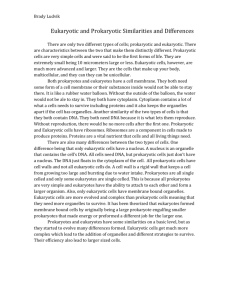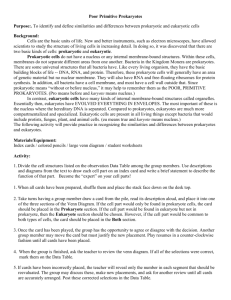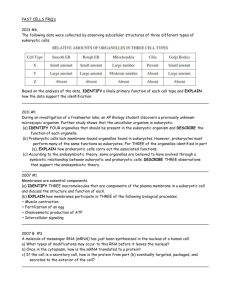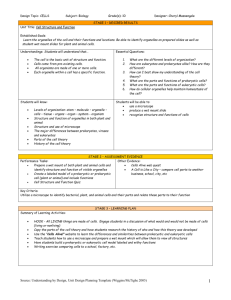Prokaryote vs Eukaryote Worksheet: Cell Structure
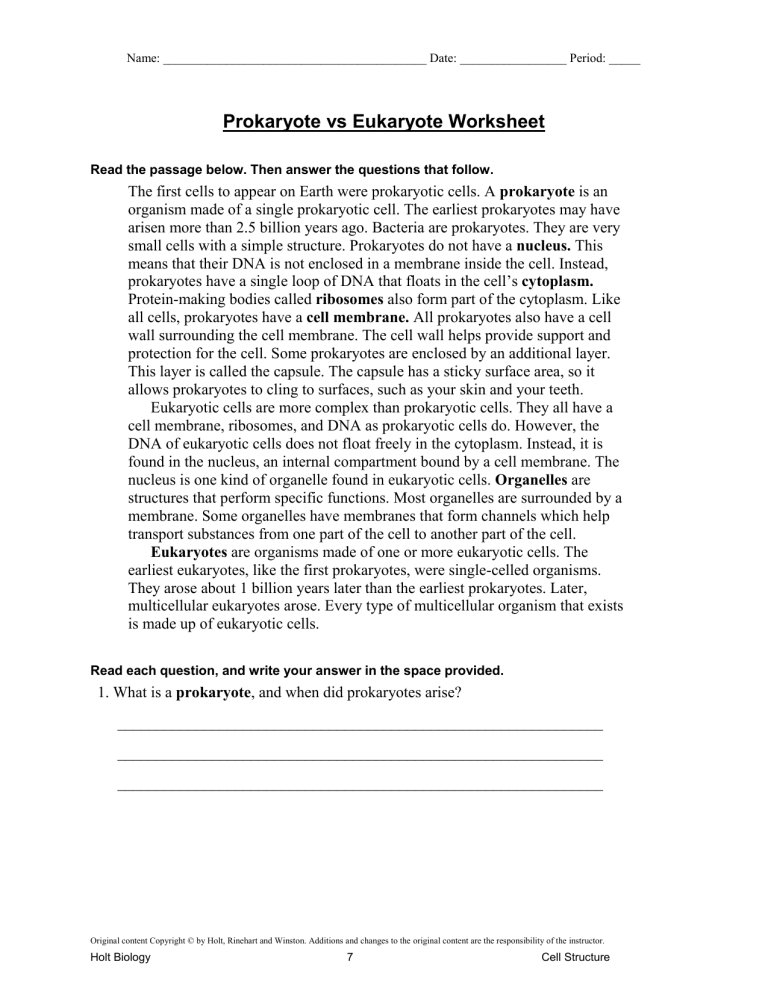
Name: __________________________________________ Date: _________________ Period: _____
Prokaryote vs Eukaryote Worksheet
Read the passage below. Then answer the questions that follow.
The first cells to appear on Earth were prokaryotic cells. A prokaryote is an organism made of a single prokaryotic cell. The earliest prokaryotes may have arisen more than 2.5 billion years ago. Bacteria are prokaryotes. They are very small cells with a simple structure. Prokaryotes do not have a nucleus.
This means that their DNA is not enclosed in a membrane inside the cell. Instead, prokaryotes have a single loop of DNA that floats in the cell’s cytoplasm.
Protein-making bodies called ribosomes also form part of the cytoplasm. Like all cells, prokaryotes have a cell membrane.
All prokaryotes also have a cell wall surrounding the cell membrane. The cell wall helps provide support and protection for the cell. Some prokaryotes are enclosed by an additional layer.
This layer is called the capsule. The capsule has a sticky surface area, so it allows prokaryotes to cling to surfaces, such as your skin and your teeth.
Eukaryotic cells are more complex than prokaryotic cells. They all have a cell membrane, ribosomes, and DNA as prokaryotic cells do. However, the
DNA of eukaryotic cells does not float freely in the cytoplasm. Instead, it is found in the nucleus, an internal compartment bound by a cell membrane. The nucleus is one kind of organelle found in eukaryotic cells. Organelles are structures that perform specific functions. Most organelles are surrounded by a membrane. Some organelles have membranes that form channels which help transport substances from one part of the cell to another part of the cell.
Eukaryotes are organisms made of one or more eukaryotic cells. The earliest eukaryotes, like the first prokaryotes, were single-celled organisms.
They arose about 1 billion years later than the earliest prokaryotes. Later, multicellular eukaryotes arose. Every type of multicellular organism that exists is made up of eukaryotic cells.
Read each question, and write your answer in the space provided.
1. What is a prokaryote , and when did prokaryotes arise?
______________________________________________________________
______________________________________________________________
______________________________________________________________
Original content Copyright © by Holt, Rinehart and Winston. Additions and changes to the original content are the responsibility of the instructor.
Holt Biology 7 Cell Structure
Name: __________________________________________ Date: _________________ Period: _____
Prokaryote vs. Eukaryote Worksheet continued
2. Describe three main features inside a prokaryotic cell.
______________________________________________________________
______________________________________________________________
______________________________________________________________
3. Describe the structures that form the outside of a prokaryotic cell . Tell whether each structure is common to all prokaryotes.
______________________________________________________________
______________________________________________________________
______________________________________________________________
______________________________________________________________
4. What is a eukaryote , and when did eukaryotes first arise?
______________________________________________________________
______________________________________________________________
SKILL: ORGANIZING
INFORMATION
Fill in the Venn diagram to compare and contrast the structure of prokaryotic and eukaryotic cells.
In the space provided, write the letter of the phrase that best answers the question.
_____ 8. From which type of cells did multicellular organisms arise?
a. prokaryotic cells b. prokaryotic cells with a capsule
c. eukaryotic cells d. both prokaryotic and eukaryotic cells
Original content Copyright © by Holt, Rinehart and Winston. Additions and changes to the original content are the responsibility of the instructor.
Holt Biology 8 Cell Structure



